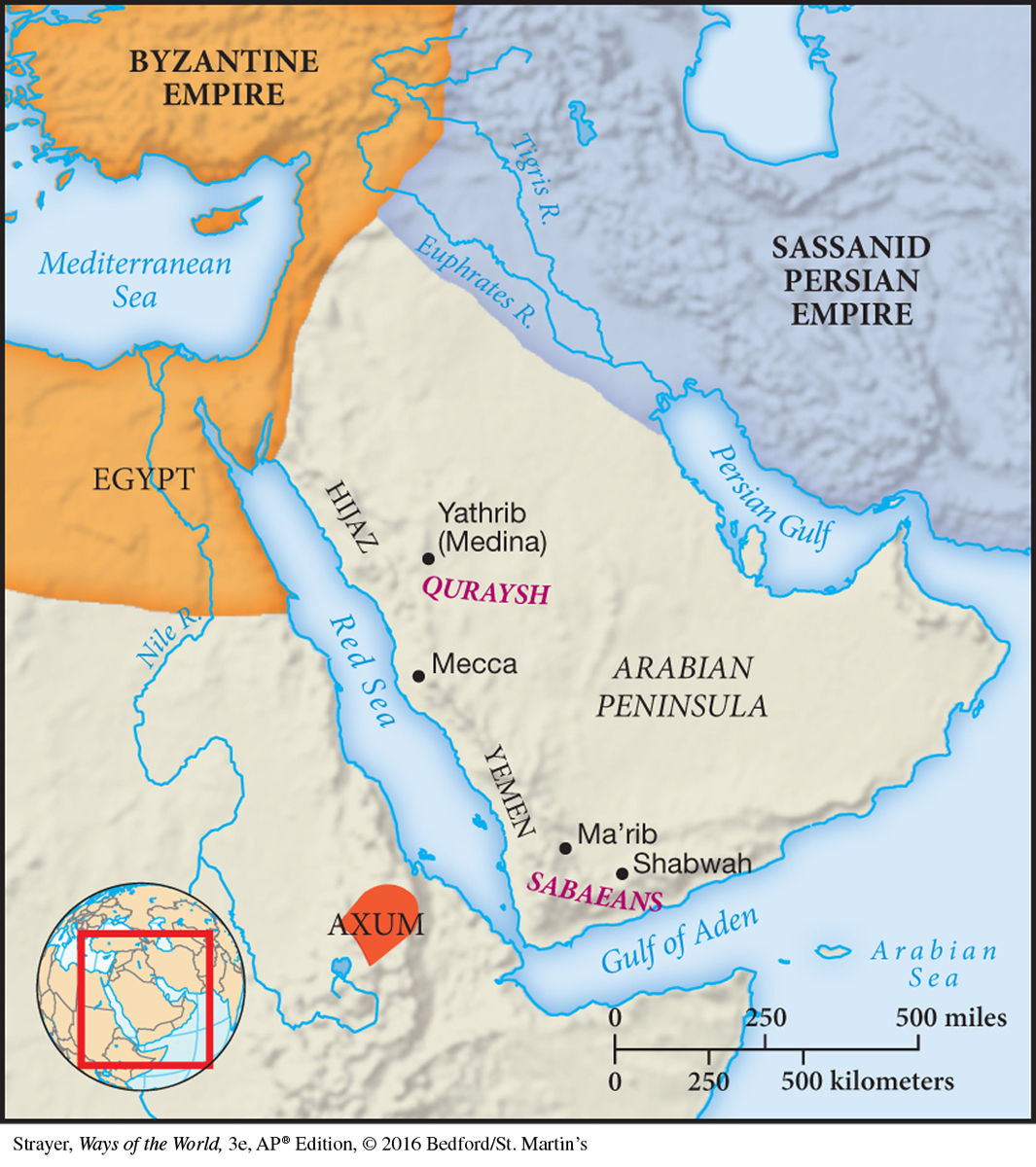The Homeland of Islam
AP® EXAM TIP
Know the major features of Islam’s roots.

The central region of the Arabian Peninsula had long been inhabited by nomadic Arabs, known as Bedouins, who herded their sheep and camels in seasonal migrations. These peoples lived in fiercely independent clans and tribes, which often engaged in bitter blood feuds with one another. They recognized a variety of gods, ancestors, and nature spirits; valued personal bravery, group loyalty, and hospitality; and greatly treasured their highly expressive oral poetry. But there was more to Arabia than camel-herding nomads. In scattered oases, the highlands of Yemen, and interior mountain communities, sedentary village-based agriculture was practiced, and in the northern and southern regions of Arabia, small kingdoms had flourished in earlier times. Arabia also sat astride increasingly important trade routes that connected the Indian Ocean world with that of the Mediterranean Sea, a location that gave rise to cosmopolitan commercial cities, whose values and practices were often in conflict with those of traditional Arab tribes (see Map 9.1).
One of those cities, Mecca, came to occupy a distinctive role in Arabia. Though somewhat off the major long-distance trade routes, Mecca was the site of the Kaaba, the most prominent religious shrine in Arabia, which housed representations of some 360 deities and was the destination for many pilgrims. Mecca’s dominant tribe, the Quraysh (koor-EYE’SH), had come to control access to the Kaaba and had grown wealthy by taxing the local trade that accompanied the annual pilgrimage season. By the sixth century, Mecca was home to people from various tribes and clans as well as an assortment of individual outlaws, exiles, refugees, and foreign merchants, but much of its growing wealth was concentrated in the hands of a few ruling Quraysh families.
Guided Reading Question
▪DESCRIPTION
In what ways did the early history of Islam reflect its Arabian origins?
AP® EXAM TIP
Cross-cultural connections of major belief systems are important concepts on the AP® exam.
Furthermore, Arabia was located on the periphery of two established and rival civilizations of that time — the Byzantine Empire, heir to the Roman world, and the Sassanid Empire, heir to the imperial traditions of Persia. This location, coupled with long-distance trade, ensured some familiarity with the larger world, particularly in the cities and settled farming regions of the peninsula. Many Jews and Christians as well as some Zoroastrians lived among the Arabs, and their monotheistic ideas became widely known. By the time of Muhammad, most of the settled Arabs had acknowledged the preeminent position of Allah, the supreme god of the Arab pantheon, although they usually found the lesser gods, including the three daughters of Allah, far more accessible. Moreover, they increasingly identified Allah with Yahweh, the Jewish High God, and regarded themselves too as “children of Abraham.” A few Arabs were beginning to explore the possibility that Allah/Yahweh was the only God and that the many others, residing in the Kaaba and in shrines across the peninsula, were nothing more than “helpless and harmless idols.”2
To an outside observer around 600, it might well have seemed that Arabs were moving toward Judaism religiously or that Christianity, the most rapidly growing religion in western Asia, would encompass Arabia as well. Any such expectations, however, were thoroughly confounded by the dramatic events of the seventh century.